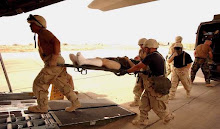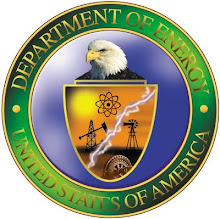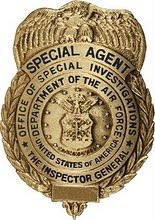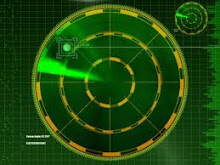By Steve Hammons
When Defense Secretary Robert Gates presents his plans for the Pentagon budget, it could be wise for him to consider modest funding for “transcendent warfare” research and development.
Transcendent warfare – a term used by a Navy SEAL officer in a 2001 research paper at the Marine Corps War College – includes elements of soft power and hard power, potentially enhancing both. We could say that a concept of transcendent power is capable of creating a synergy of superior methods and resources to face future challenges such as, but not limited to, irregular warfare (IW).
SecDef Gates might already be aware of this potential.
When breakthroughs in transcendent warfare took place in the 1970s, ‘80s and ‘90s in Project STAR GATE’s research on human perception, the military services led the way in cooperation with the Defense Intelligence Agency (DIA).
Maybe it is now time for the Defense Department to lead again on transcendent power R&D.
LEGITIMATE DEFENSE EFFORTS
Many Americans find it troubling when public money is wasted on unwise defense spending or obvious fraud and war profiteering. In recent years, concern has increased about these practices – many of which seem dishonorable.
However, war profiteering should always be distinguished from legitimate and valuable defense spending. Modest funding for transcendent warfare seems to fall into the latter category.
What kinds of transcendent power projects might be valuable for our military, and also provide parallel benefits to other important security and safety personnel as well as society as a whole?
First, thorough review and revisiting of Project STAR GATE research and operations seems like a starting point. Up-to-date research and information-gathering on related scientific and practical-application approaches should be included.
In addition, training and education programs should be developed and implemented for a wider range of personnel. This educational effort would focus on concepts underlying enhanced human perception as well as real-world applications.
Additional efforts should be started to expand the potential applications for knowledge gained from Project STAR GATE and related activities that fall into the categories of transcendent warfare and transcendent power.
CREATING SUPPORT
Can support for these kinds of efforts be created within the DoD, intelligence community, Congress, the public, the media and the current administration? We are probably experiencing a normal learning curve about the significant potential that exists in leading-edge and emerging discoveries such as those related to Project STAR GATE and transcendent warfare.
As the U.S. faces a wider variety of internal and global situations, it can be helpful to explore the possibilities associated with advances of sometimes unconventional approaches. This kind of mindset is relevant to irregular warfare and a wide range of other endeavors.
For the American military, continuing irregular and asymmetric conflicts will probably continue for a time in a kind of “warm war” with certain groups.
We may also be called upon to assist in humanitarian operations, peace operations, conflict prevention, alliance-building and other activities that can make good use of transcendent power assets.
At home, our economic innovation, technological development, educational system enhancement, health care reorganization and many other projects can also benefit from leading-edge research related to Project STAR GATE.
Minimal investments in transcendent power R&D could yield optimal benefits for Americans and the international community.
skip to main |
skip to sidebar

In the past 30 days, readers from approximately 40 countries or territories using about 20 languages visited the Joint Recon Study Group site.

To see more articles, scroll down the right-side column.

Steve Hammons

Articles from the Joint Recon Study Group site and Transcendent TV & Media site are included.
The Joint Reconnaissance Study Group is the San Diego-based, combined-service/agency, research-and-activities team in my novels "Mission Into Light" and sequel "Light's Hand." This site contains information of interest to the JRSG.
Home page: Joint Recon Study Group site
Readers from around the world visit this site.

In the past 30 days, readers from approximately 40 countries or territories using about 20 languages visited the Joint Recon Study Group site.
April 2021 threat alert: ‘Force protection’ for our troops now the responsibility of all Americans
First responders must deal with society’s problems, shortcomings, injustices every day
Could some UFOs be linked to Native American 'white stone canoe' legends, stories?
Wildland firefighter basic training available at community colleges, tech schools, training centers
‘Boomer remover’ coronavirus is bigger threat to WWII generation that saved the world
‘Black swan’ events that aren’t: Coronavirus, climate emergency, unidentified aerial phenonema
Reagan’s complete 1987 UN message on ‘alien threat’ overlooked: Grave danger here, now
Was Reagan briefed about UFOs and original ‘Day the Earth Stood Still’ movie?
My military draft lottery number was #165 during final Vietnam War years
“Keep On The Sunny Side,” by The Whites, from movie O Brother, Where Art Thou?”
Living along Ohio River for centuries, Native Shawnee called it ‘Kiskepila Sepe’ – ‘Eagle River’
Native American words around us: States, towns, rivers, lakes, terrain, plants, animals, military
Athens County, Ohio, was key spot when colonists, Redcoats fought Shawnee in 1774 battle
1787 Northwest Ordinance set course for Ohio, Indiana, Illinois, Michigan, Wisconsin, Minnesota
Smallpox-tainted blankets were 1763 bioweapon on northern Appalachian Mountains frontier
Diana Krall performs “Maybe You’ll Be There" live in Paris with Paris Symphony Orchestra 2001.
Books to read in 2021? Novels "Mission Into Light" and the sequel "Light's Hand"
Novel excerpt: Renew, prepare America with ‘Urgent Response Group’ for teens, young adults
Diana Krall performs “I Get Along” live in Paris with Paris Symphony Orchestra 2001.
Steve Tyrell sings “Give Me the Simple Life.”
Diana Krall performs “Love Letters” live in Paris with Paris Symphony Orchestra 2001.
Visit the article archives!

To see more articles, scroll down the right-side column.
Novel "Mission Into Light" overview on Amazon
Novel "Light's Hand" overview on Amazon
Adventures of the Joint Recon Study Group: Overview and synopses of activities and operations
Key chapter overviews: Points of interest in the novel "Mission Into Light"
Key chapter overviews: Points of interest in the novel "Light's Hand"
Multimedia rights available
English and foreign-language book rights, audio book and e-book rights for "Mission Into Light" and "Light's Hand" are available. Movie and TV rights are available.
I'm seeking agent representation for these works and rights.
Please contact Steve Hammons for more information at hammons55@gmail.com.
Feature film screenplay
I completed a feature film screenplay in 2006 based on “Mission Into Light” and “Light’s Hand” combining key elements of both novels.
The screenplay takes audiences into the adventures and discoveries of the Joint Recon Study Group and the relationships among team members, friends and associates as they explore leading-edge research and emerging transcendent developments.
I'm seeking agent representation for this screenplay.
.........................
I also wrote a TV series pilot script based on "Mission Into Light" and "Light's Hand" story. I'm seeking agent representation this script.
About the Author

Steve Hammons
About the Author
I was born and raised in southwestern Ohio near the Kentucky and Indiana borders, then went to college at Ohio University in the southeastern Appalachian region of the state near West Virginia.
I graduated with a dual major in communication (journalism focus) and health education (psychology focus) with a minor in pre-law.
Ohio U. is home to the respected Scripps College of Communication and E.W. Scripps School of Journalism.
I also completed two graduate-level courses in guidance counseling theory and method at Ohio U.'s College of Education, School of Applied Behavioral Sciences and Educational Leadership.
At the end of my undergraduate education at Ohio University, I moved to the beautiful American Southwest where I applied my education, continual training and and ongoing experience to related professional fields such as health care, journalism and special research areas.
My novels "Mission Into Light" and the sequel "Light’s Hand" are available in e-book and 6"x9" paperback from most online booksellers worldwide.
Readers review metaphysical-military-intelligence adventure novel ‘Mission Into Light’
My articles on DoD CultureReady blog, Defense Language and National Security Education Office
Transcendent TV & Media site
Past articles: Scroll down the right-side column for more articles.

Articles from the Joint Recon Study Group site and Transcendent TV & Media site are included.































































































































































































